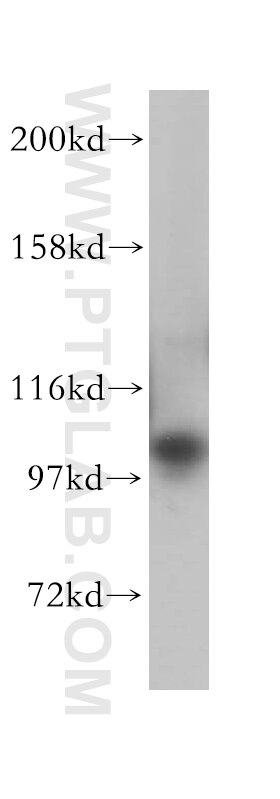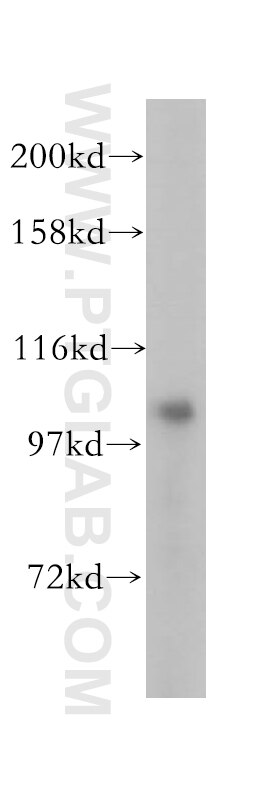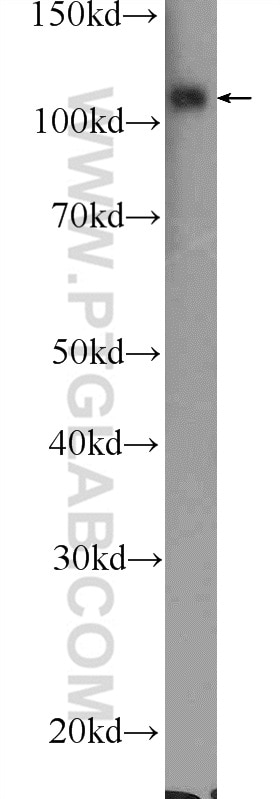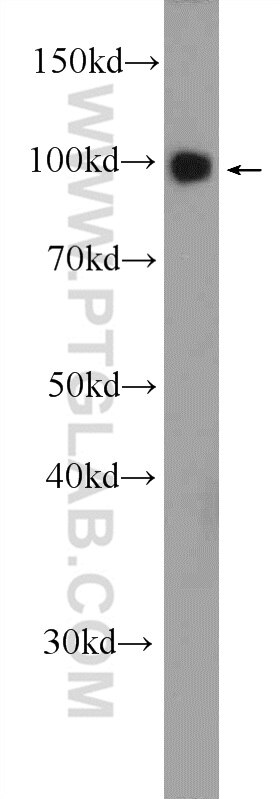- Phare
- Validé par KD/KO
Anticorps Polyclonal de lapin anti-OCRL
OCRL Polyclonal Antibody for WB, IP, IHC, ELISA
Hôte / Isotype
Lapin / IgG
Réactivité testée
Humain, rat, souris
Applications
WB, IHC, IF, IP, ELISA
Conjugaison
Non conjugué
N° de cat : 17695-1-AP
Synonymes
Galerie de données de validation
Applications testées
| Résultats positifs en WB | cellules HeLa, cellules HEK-293, cellules SH-SY5Y, tissu cérébral de rat, tissu cérébral de souris |
| Résultats positifs en IP | cellules HeLa |
| Résultats positifs en IHC | tissu rénal de souris il est suggéré de démasquer l'antigène avec un tampon de TE buffer pH 9.0; (*) À défaut, 'le démasquage de l'antigène peut être 'effectué avec un tampon citrate pH 6,0. |
Dilution recommandée
| Application | Dilution |
|---|---|
| Western Blot (WB) | WB : 1:500-1:2000 |
| Immunoprécipitation (IP) | IP : 0.5-4.0 ug for 1.0-3.0 mg of total protein lysate |
| Immunohistochimie (IHC) | IHC : 1:100-1:400 |
| It is recommended that this reagent should be titrated in each testing system to obtain optimal results. | |
| Sample-dependent, check data in validation data gallery | |
Applications publiées
| KD/KO | See 3 publications below |
| WB | See 5 publications below |
| IHC | See 1 publications below |
| IF | See 2 publications below |
Informations sur le produit
17695-1-AP cible OCRL dans les applications de WB, IHC, IF, IP, ELISA et montre une réactivité avec des échantillons Humain, rat, souris
| Réactivité | Humain, rat, souris |
| Réactivité citée | Humain, souris |
| Hôte / Isotype | Lapin / IgG |
| Clonalité | Polyclonal |
| Type | Anticorps |
| Immunogène | OCRL Protéine recombinante Ag11900 |
| Nom complet | oculocerebrorenal syndrome of Lowe |
| Masse moléculaire calculée | 893 aa, 103 kDa |
| Poids moléculaire observé | 105 kDa |
| Numéro d’acquisition GenBank | BC094726 |
| Symbole du gène | OCRL |
| Identification du gène (NCBI) | 4952 |
| Conjugaison | Non conjugué |
| Forme | Liquide |
| Méthode de purification | Purification par affinité contre l'antigène |
| Tampon de stockage | PBS with 0.02% sodium azide and 50% glycerol |
| Conditions de stockage | Stocker à -20°C. Stable pendant un an après l'expédition. L'aliquotage n'est pas nécessaire pour le stockage à -20oC Les 20ul contiennent 0,1% de BSA. |
Informations générales
OCRL is also named as INPP5F, OCRL1 and belongs to the 5-phosphatase gene family and that Lowe syndrome represents an inborn error of inositol phosphate metabolism(PMID: 9430698).The protein product of the gene that when mutated is responsible for Lowe syndrome, or oculocerebrorenal syndrome (OCRL), is an inositol polyphosphate 5-phosphatase.It may function in lysosomal membrane trafficking by regulating the specific pool of phosphatidylinositol 4,5-bisphosphate that is associated with lysosomes.It has 2 isoforms produced by alternative splicing.Defects in OCRL are the cause of Lowe oculocerebrorenal syndrome (OCRL) and Dent disease type 2 (DD2).This antibody is specific to OCRL.
Protocole
| Product Specific Protocols | |
|---|---|
| WB protocol for OCRL antibody 17695-1-AP | Download protocol |
| IHC protocol for OCRL antibody 17695-1-AP | Download protocol |
| IP protocol for OCRL antibody 17695-1-AP | Download protocol |
| Standard Protocols | |
|---|---|
| Click here to view our Standard Protocols |
Publications
| Species | Application | Title |
|---|---|---|
Mol Autism Modeling the neuropsychiatric manifestations of Lowe syndrome using induced pluripotent stem cells: defective F-actin polymerization and WAVE-1 expression in neuronal cells.
| ||
Nephrol Dial Transplant Identification of novel OCRL isoforms associated with phenotypic differences between Dent disease-2 and Lowe syndrome. | ||
J Neurodev Disord Transcriptome analysis of neural progenitor cells derived from Lowe syndrome induced pluripotent stem cells: identification of candidate genes for the neurodevelopmental and eye manifestations.
| ||
BMC Med Genomics Novel pathogenic OCRL mutations and genotype-phenotype analysis of Chinese children affected by oculocerebrorenal syndrome: two cases and a literature review | ||
Cell Death Dis Rab35 and glucocorticoids regulate APP and BACE1 trafficking to modulate Aβ production.
| ||
Cell Mol Life Sci Class I PI3Ks activate stretch-induced autophagy in trabecular meshwork cells |









